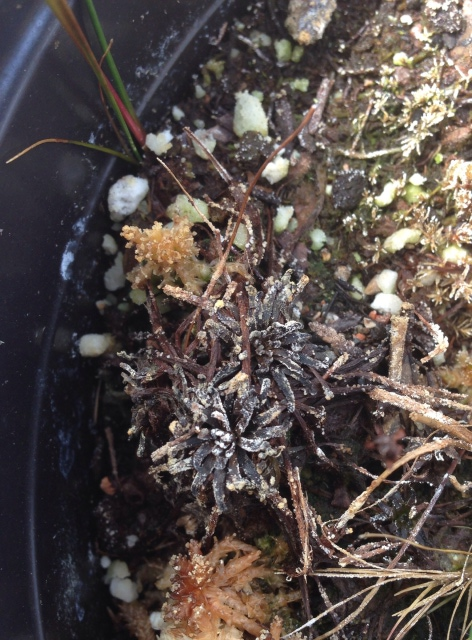Question
 Dead sundews
Dead sundews
Hello! My friend told me that temperate drosera are hard to grow because they rot and die very easily. However, I still wanted to give them try because people like you seem to have amazing results growing these plants. I purchased some drosera intermedia (the temperate version) last summer and they grew beautifully, producing lots of dewy leaves. Then when it came time for winter, I over wintered them in my cool basement where they still received some indirect light. They started to form the hibernacula at the end of fall and then I put them in my basement where they remained in the hibernacula all of winter. Then a month ago, the weather started warming up and I took them out of the basement and put them outside where they could receive full sun and the average low was about 40-45. They started looking green again and coming out of the hibernacula. However, after they grew a little bit, evrything just stopped. No complete leave we're ever produced, the tiny "stub" leaves they had just slowly turned browned and they looked dead. Could you help me out as the why this happened? Thank you
The pots were always in two inches of standing water throughout the winter and spring. I heavily sprayed then with a safe sulfur based fungicide multiple times through the winter and early spring so I'm pretty sure mold shouldn't be the case. Then after the leaves turned brown this white substance started to grow on them and I'm not sure what it is.
AnswerTemperate sundews are easy to overwinter as long as you follow basic protocols. Growers who overwinter them outdoors have an easier time than growers who overwinter them indoors. This is probably where the misconception occurs about temperate sundews being hard to grow. We have excellent results because we overwinter our temperate plants outdoors. This past winter, they experienced temperatures as low as 8癋, twice. All pots froze solid, and our trays were solid bricks of ice. This spring, they emerged beautifully.
The challenge of growing temperate sundews indoors or in a basement is keeping the temperature cool (near freezing) and preventing fungus. I suspect that your basement wasn't cool enough. Fungal spores may have also killed your plant. Sulfur prevents fungal spores from growing, but it doesn't kill them. It's simply a preventative measure. I also suspect that as the plant grew, fungal spores around the pot started growing on the emerging new growth since it didn't have any sulfur on it. In your case, repotting the plant into fresh soil when you brought it out of dormancy would have likely prevented the plant from dying.
(For winter care, we recommend using sulfur because it's longer lasting. Products that kill spores are very short acting and needs to be applied repeatedly. This can be problematic if plants are under mulch.)
I recommend reading our care guide about winter care for temperate sundews. We also have a section on winter care on our Volume 1 DVD. (It's to involved to discuss winter care in this format, so you'll need to do a bit of homework on your part.)
Give temperate sundews another try, but read about winter care. We have many customers who follow our advice and have temperate sundews living for years. They really are easy to grow!
Good growing!
Jacob Farin






